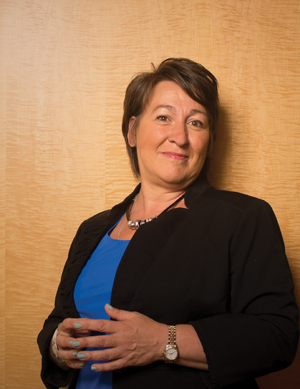The answer to the question, ‘Dude, where’s my order?,’ is about to become more clear.
And the buyside trader, who has long asked this question, is happy to finally get some resolution on how its orders are routed and handled by the brokers, is going to get some clarity. The buyside has long argued that the sellside’s order routing choices are driven more by its own self-interest and rebates rather than the institutional need for best execution and block volume.

See Also:Dude, Where’s My Order?
To that end, Bloomberg reported in an interview with Thomas Gira, the regulators executive vice president of market regulation, that the Financial Industry Regulatory Authority (FINRA) will be sending select brokers a questionnaire during the first half of 2014. The regulators are seeking clarity on brokers’ order routing decision-making processes among the myriad exchanges, dark pools and alternate trading systems where U.S. equities trade.

FINRA will “probably do some type of a sweep, and make sure firms are asking the right questions and looking at the right numbers and doing the right analysis when they’re making routing decisions,” Gira told Bloomberg. The self-regulatory organization, which oversees its broker-dealer members, wants to ensure that “they’re not making decisions to put the rebate ahead of the execution quality,” he said.
FINRA did not to respond to Traders Magazine’s own request for comment by publication time. Several brokers declined to comment as well.
David Jennings, senior trader at Houston-based Bridgeway Capital, said the move by FINRA to get the brokers explain their order routing processes was a positive development for the market.
“I’m in favor of brokers having to explain their order routing,” Jennings said. “Most brokers will explain their routing methodology if asked. “Personally, I’d like to see an end to all forms of payment for order flow and maker/taker rebates etc.”
And it is the maker-taker pricing model that has come under fire recently. Maker-taker is the pricing system of charging brokers who place orders while paying the traders who fulfill the transaction. Maker-taker came about shortly after the Securities and Exchange Commission cut the minimum price increment shares to a penny, down from eighths or sixteenths of a dollar back in 2001. This reduced the spreads and profitability for market makers to make markets. As a result, exchanges started paying electronic liquidity providers to make markets.
“We are looking closely at best-execution decisions in the very fragmented world of the equities side, particularly with regard to limit orders placed with exchanges that may impose significant maker-taker fees,” Richard Ketchum, chairman and chief executive officer of Finra, told Bloomberg.
Cheryl Cargie, head trader at Ariel Investments, told Traders Magazine she was also pleased about the decision to probe the brokers. Last year, she made no bones about how maker-taker isn’t good for the marketplace and the way brokers decide to route orders is opaque at best.
See Also:Back to Basics
“We’ve always asked for this clarity on order routing,” Cargie told Traders Magazine. “Some brokers will give you the logic on how they route or how the routers work – but you have to ask them.” It is not provided otherwise, she added. “Honestly, I don’t know why they route to a particular over another but I do believe it has to do with rebates and trading volume.”

Cargie added that while FINRA is sending out a query on order routing practices, the bigger question for her is will the brokers answer and will it really change the way business is conducted.
“FINRA can ask for answers and even possibly get some, but if it doesn’t produce a positive change for us, then what’s the use,” Cargie said. What will this lead to? It will be nice to get more transparency as to the broker routing methodology.”
And the buyside isn’t alone in its quest for transparency. At least one ATS is too.
Donald Bollerman, head of Market Operations IEX, an ATS owned by the buyside, told Traders Magazine it too supports the idea of FINRA querying the brokers. The dark pool, which prides itself on catering to the buysides’ needs for transparency and disclosure, sees the regulatory move as a positive step to improving the market structure. Also, IEX supports, to an extent, justification of routing decisions.
“Having worked for a number of different trading venues over the years, seeing the venue selection discussion moving beyond pricing/rebates to offered functionality and differentiated market models would be long overdue,” Bollerman said. “We’d like to see a “Know-Your-Venue” element to order routing strongly encouraged.”




